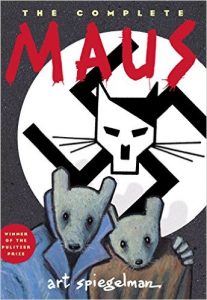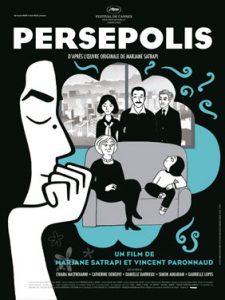War History: As Told By Graphic Novels
Sarah Vincent//Blog Writer
Artists find millions of devices to filter their art through. For some it is poetry or photography. And, for one very particular group, graphic novels are a way to tell their own story, with some amazing tales connected to living during horrific wars. In high school, I was first introduced to these types of stories when I was required to read Maus by Art Spiegelman.

This unique story spans over eleven years of Spiegelman interviewing his father, who was a Polish Jew living during the Holocaust. One thing that is striking about this comic book is that the author is very present in the narrative and is honest about his thought process throughout making the story. Through this form of art, Spiegelman is able to use text and visual media to convey his story in its most efficient form.
Maus also has some very prominent analogies with the use of the cat and the mouse. The mice are the Jews living during that time, who are viewed as vermin: dirty pests who are targeted by the cats, or the Nazis. This is a very visual representation of Nazi Germany that sticks with the reader as it is shown in every panel that Spiegelman produced.
Junior year of high school, I was assigned to read Persepolis by Marjane Satrapi. This graphic novel focuses on a young girl – Marjane Satrapi – growing up in Iran, just as things started to get bad, with the segregation by gender, and women’s rights diminishing. This book is amazing in showing the tone of Iran throughout its panels.

Especially growing up as a young woman, Satrapi had to deal with the pressures of being Americanized and wanting to leave Iran to get away from the oppression. While reading, you follow Satrapi as she moves to Vienna, and then back to Iran. She starts listening to American rock music and smoking cigarettes, and dreams of leaving war-torn Iran. The usage of the comic book gives the reader a better sense of Satrapi’s emotions and hardships because you follow along as they happen to her. I think that it is a way to show a side of history of Iran that many people are not tuned into.
I think that there are lots of successful ways that history can be shown in literature, and I think that personal stories about history are sometimes best shown through graphic novels. Being able to use the panels to visually show emotion and scenes unfold before the reader’s eyes lets the readers immerse themselves in the story by understanding the actions that the characters go through by watching it happen to them. It’s a form that appeals to many people, and the visual nature of it opens up the audience to different age groups, and comprehensive levels.
I found a list of other war stories told as graphic novels that could be read if this topic is of interest: http://www.yalsa.ala.org/thehub/2015/03/19/history-comes-alive-in-graphic-novels/
